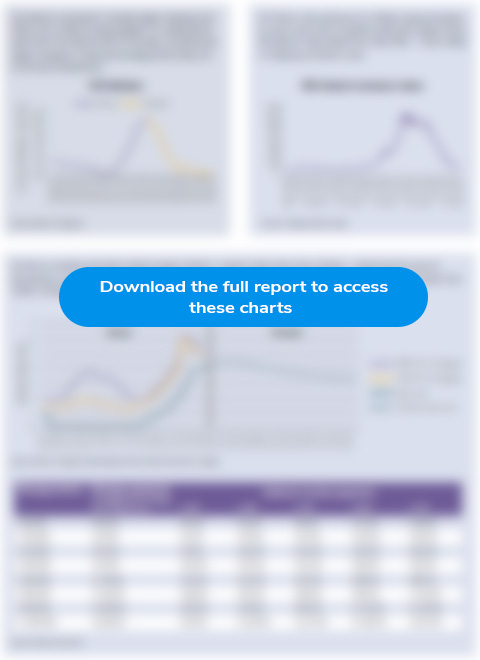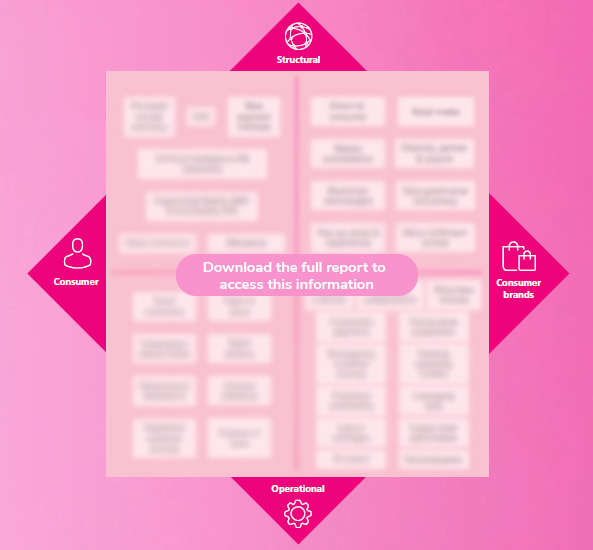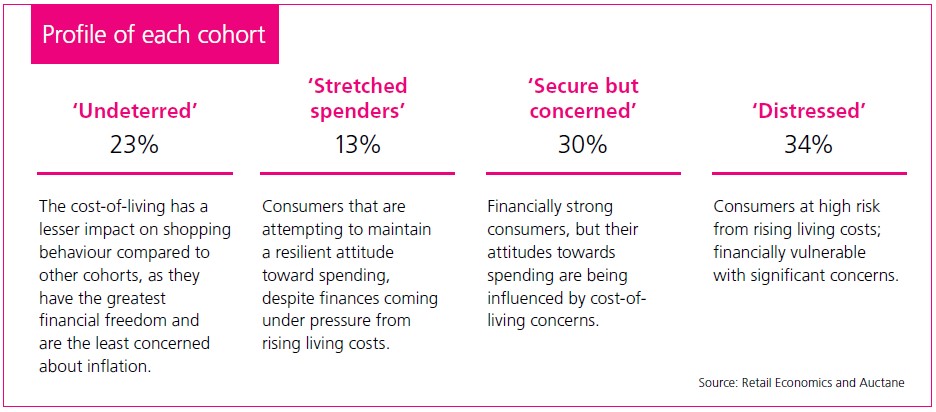Taking Stock - UK Retail & Consumer Trends
5 Minute Read
Our report 'Taking Stock - What's in store for UK retail and consumer' (produced in partnership with CMS) looks at the outlook for retail and consumer in 2023 and trends to watch in 2023 and beyond.
Below are some exerts from the report, download the full report to access even more insights and data.
Click here to explore working with Retail Economics for creating thought leadership papers like this.
What can you get from this report?
-
A deeper understanding of the outlook for 2023 UK retail and consumers
-
High-level information on key trends for UK retail and consumers in 2023 and beyond
-
A understanding around how the events of the past year have affected UK retail and consumers
-
A better understanding of UK consumers
Contents:
-
The big picture - how we got to where we are
-
The retail and consumer outlook
-
Trends to watch in 2023 and beyond
-
Conclusion
The big picture
Although many businesses breathed a sigh of relief having survived 2022, so far conditions in 2023 have been unrelenting once again.
The retail and consumer goods landscape continues to suffer from a series of sudden overlapping shocks that began to significantly unfold over the past year, including geopolitical instability, Brexit fallout, political leadership turmoil, staggered global reopenings, and a cost-of-living crisis amid high inflation.
This combined impact is testing brands and retailers. Strong inflation and excess stock, at a time when consumers are looking to cut back, is causing significant challenges for brands, particularly for fashion and home-related categories, exposed to overseas stock and price sensitivity. A focus on cash flow, prices and streamlined stock was critical in 2022, and continues to shape the backdrop for 2023. Once again, operating models are being pressure tested as businesses fall into administration and market consolidation continues, with the likes of Next snapping up Made.com, Joules and Cath Kidston, and Frasers Group acquiring Missguided, Studio Retail and I Saw It First over the past year.
In Q1 2022, a glimmer of hope emerged after the pandemic, marking a resurgence of economic growth and significant improvements in global supply chains. However, this promising trend was abruptly curtailed by Russia’s invasion of Ukraine. Significant geo-political instability sent shockwaves across commodity prices, including oil and gas. This fuelled the deepest inflationary crisis in the UK since the 1970s and cemented a cost-of-living crisis, as wages failed to keep up with the rising price of essentials.
As cost pressures trickled down to consumers, UK inflation rose to a 41-year high of 11.1% in October 20221. Consensus suggests this was the peak, as spot and forward energy prices softened, and past increases in essential goods prices fall out of annual inflation rate calculations.
The impact of high inflation has taken its toll on household finances, seeing discretionary income fall by 6.2% across households in 20222. Consumers have had to seek new ways to manage eroding budgets for non-essentials, including trading down, delaying purchases and spreading payments. This benefits value players and those able to invest in prices, and squeezes mid-tier retailers that are unable to appeal to cost conscious consumers or those looking for luxury.
Consumers have had to seek new ways to manage eroding budgets for non-essentials, including trading down, delaying purchases and spreading payments.
In a bid to stabilise financial markets, tame inflation and respond to a tight labour market, the Bank of England raised interest rates to the highest level since the 2008 financial crisis, from 0.1% in November 2021 to 3.5% by the end of 2022, 4.25% by March 2023 and 4.50% by May 2023.
The retail and consumer outlook
Despite significant headwinds in 2022, there has been improvement in expectations over the length and depth of the UK recession entering 2023, if indeed at all.
The improvement is clear across forecasts from the Bank of England, showing Gross Domestic Product (GDP) was expected to fall 2.0% in Q1 2024, revised to a 0.7% decline in its February 2023 Monetary Policy Report. The Bank now expects the UK to avoid a technical recession this year, which is defined as two consecutive quarters of contraction.
This combined impact is testing brands and retailers. Strong inflation and excess stock, at a time when consumers are looking to cut back, is causing significant challenges for brands, particularly for fashion and home-related categories, exposed to overseas stock and price sensitivity. A focus on cash flow, prices and streamlined stock was critical in 2022, and continues to shape the backdrop for 2023. Once again, operating models are being pressure tested as businesses fall into administration and market consolidation continues, with the likes of Next snapping up Made.com, Joules and Cath Kidston, and Frasers Group acquiring Missguided, Studio Retail and I Saw It First over the past year.
Fig 1: Summary in charts: economic indicators shaping 2023

Source: Retail Economics
(Download the full report for the rest of the outlook for 2023)
Trends to watch in 2023 and beyond
Consumer brands and retailers are undergoing a period of profound transformation, driven by factors such as accelerated digital transformation, fallout from the pandemic, regulatory changes and heightened costs.
The industry has been under pressure to adapt to changing customer journeys at a time when balance sheets are under pressure. A rebalancing between physical and online shopping channels has also occurred, as personal finances are squeezed and consumers search for the best deals.
However, the impact has been felt unevenly. The unwinding pace of the pandemic-induced shift online varies by category, consumer affluence and working environment. But from a more holistic perspective, the outlook is being shaped by a vast array of structural and operational factors as depicted in Figure 2 which shows a ‘trends quadrant’, framing some of the top considerations for strategic planning.
Fig 2: Top considerations going forward

Source: Retail Economics
Trend 1: Cost Crunch
Persistent inflation above the Bank of England’s 2% CPI target in the year ahead presents both challenges and opportunities for retailers, consumer brands, and manufacturers, who must find ways to maintain profitability while keeping prices affordable to retain and attract consumers.
The end to a decade of ultra-low interest rates, which underpinned big ticket purchases and ‘buy now pay later’ attitudes, has coincided with the emergence of four key consumer cohorts based on attitudes towards personal finances and underlying financial security.

The range of sentiment towards personal finances is ultimately seeing consumers put value at the heart of their decision making. A price-conscious consumer has emerged which is reshaping the perception of value, with quality, convenience and experience sacrificed for lower prices.
Although values vary regarding shopper mission, category and target market, core recessionary behaviours are emerging, including:
1. Trading down to cheaper alternatives: particularly impacting essentials and distress purchases.
2. Delaying or cancelling purchases: the most popular response across non-essential categories, particularly impacting categories that faced pandemic-fuelled spending (e.g. furniture and electricals).
3. Discount hunting: more considered paths to purchase, including using price comparison sites and vouchers as part of awareness and brand research to seek out the best deals.
4. Multichannel shopping: financially insecure consumers are accelerating spending back to stores following pandemic-induced online sales, in order to save on delivery and returns fees, seek out local markdowns and manage budgets in cash.
Consumer brands will need to adapt their propositions to match the needs of cost-conscious consumers with squeezed finances, while businesses themselves battle heightened operating costs.